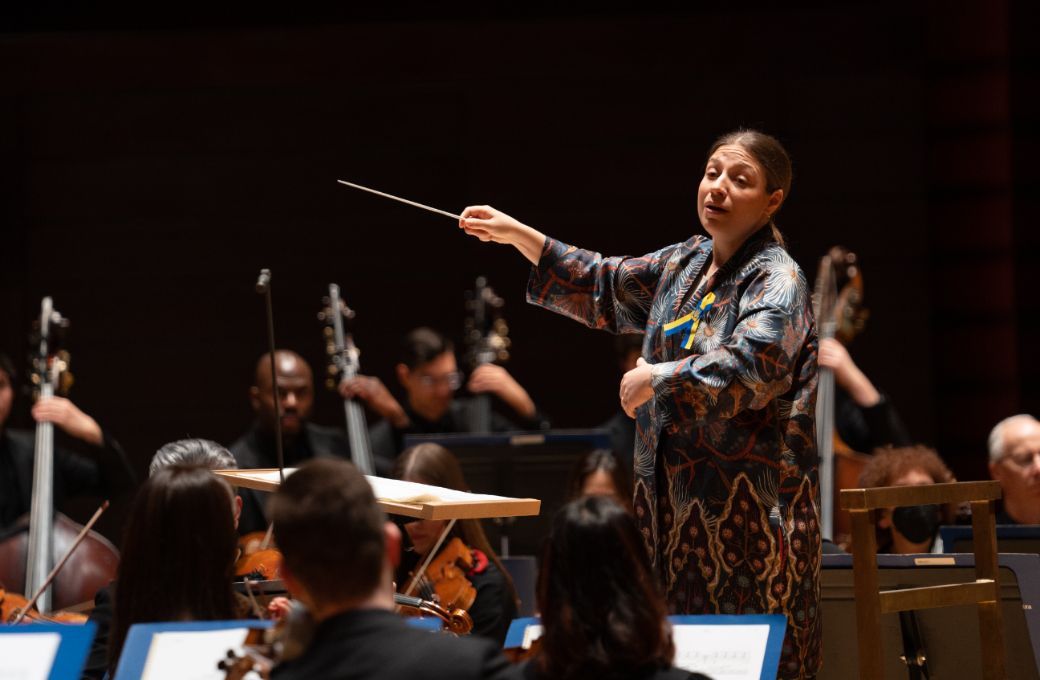Dalia Stasevska makes headlines these days for her humanitarian work in Ukraine, her birth country. That effort seemed to be acknowledged during her debut concert with the Philadelphia Orchestra, when a couple seated in the conductor’s circle above the stage hoisted a large Ukrainian flag during her curtain call. Stasevska – who herself wore a yellow ribbon synonymous with the Ukrainian resistance movement on the lapel of her patterned jacket – appeared visibly moved by the gesture. But her good works, laudable as they are, should not overshadow her skill and style on the podium, which make her one of the most intriguing young conductors on the scene today.

A resident of Finland since the age of five, Stasevska stands as a proud steward of her country’s musical traditions. Her connection to Sibelius runs deep – her husband is the composer’s great-grandson, and she serves as director of the Sibelius Festival. His Symphony no. 5 in E flat major thus made an obvious choice to anchor this subscription program, and Stasevska found new depths to explore in this familiar piece.
The conductor elegantly shaped the first movement with familiar tranquility, though she inserted details that stood out within the fabric of the piece. She drew a more assertive and individual sound from the horns than I’m used to in the Tempo molto moderato, which balanced a litheness in the complementary bassoons. The pizzicato strings in the second movement sounded guttural, dissolving into pure beauty as the players resumed bowing. The Allegro molto finale was as hard charging as I’ve ever heard it, though not at the expense of precise dynamic control. Tension ratcheted up to the stirring release of the final crashing chords. Stasevska held the silence perhaps a hair too long between each explosion, but after the final burst concluded, you felt as if you’d witnessed a lightning storm.
The program’s Scandinavian contingency also included the first local performances of Andrea Tarrodi’s tone poem Liguria. Composed in 2012, the ten-minute work offers an aural exploration of coastal Italy, with cymbals crashing like waves against the shore of a mass orchestral tutti. Tarrodi embedded fine-grained details throughout the piece that the musicians brought out beautifully, like a ravishing extended solo for English horn played by Elizabeth Starr Masoudnia, and a barrage of percussive elements that showed this section in its glory. Stasevska kept the action rushing forward, like a musical tourist discovering something new in each of the seaside locales.
Poulenc’s Organ Concerto in G minor served as the concert’s peculiar and pleasing centerpiece. Wayne Marshall brought supreme wit and a sense of theatricality to the composer’s extreme phrasing, which Stasevska balanced with transparent textures in the accompanying string orchestra. Only the occasional outburst from the timpani matched the grandeur of the solo writing. The composition itself can feel somewhat disjointed – almost as if it’s crying out to be a sonata rather than a concerto in its assertive attacks – but as a listener, I was often having too much fun to quibble. And as a programming choice, it speaks to an inventiveness from Stasevska that will hopefully be repeated with return engagements.


